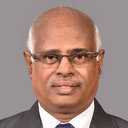Biologically improved nanofibrous scaffolds for cardiac tissue engineering.
Märksõnad
Abstraktne
Nanofibrous structure developed by electrospinning technology provides attractive extracellular matrix conditions for the anchorage, migration and differentiation of stem cells, including those responsible for regenerative medicine. Recently, biocomposite nanofibers consisting of two or more polymeric blends are electrospun more tidily in order to obtain scaffolds with desired functional and mechanical properties depending on their applications. The study focuses on one such an attempt of using copolymer Poly(l-lactic acid)-co-poly (ε-caprolactone) (PLACL), silk fibroin (SF) and Aloe Vera (AV) for fabricating biocomposite nanofibrous scaffolds for cardiac tissue engineering. SEM micrographs of fabricated electrospun PLACL, PLACL/SF and PLACL/SF/AV nanofibrous scaffolds are porous, beadless, uniform nanofibers with interconnected pores and obtained fibre diameter in the range of 459 ± 22 nm, 202 ± 12 nm and 188 ± 16 nm respectively. PLACL, PLACL/SF and PLACL/SF/AV electrospun mats obtained at room temperature with an elastic modulus of 14.1 ± 0.7, 9.96 ± 2.5 and 7.0 ± 0.9 MPa respectively. PLACL/SF/AV nanofibers have more desirable properties to act as flexible cell supporting scaffolds compared to PLACL for the repair of myocardial infarction (MI). The PLACL/SF and PLACL/SF/AV nanofibers had a contact angle of 51 ± 12° compared to that of 133 ± 15° of PLACL alone. Cardiac cell proliferation was increased by 21% in PLACL/SF/AV nanofibers compared to PLACL by day 6 and further increased to 42% by day 9. Confocal analysis for cardiac expression proteins myosin and connexin 43 was observed better by day 9 compared to all other nanofibrous scaffolds. The results proved that the fabricated PLACL/SF/AV nanofibrous scaffolds have good potentiality for the regeneration of infarcted myocardium in cardiac tissue engineering.


